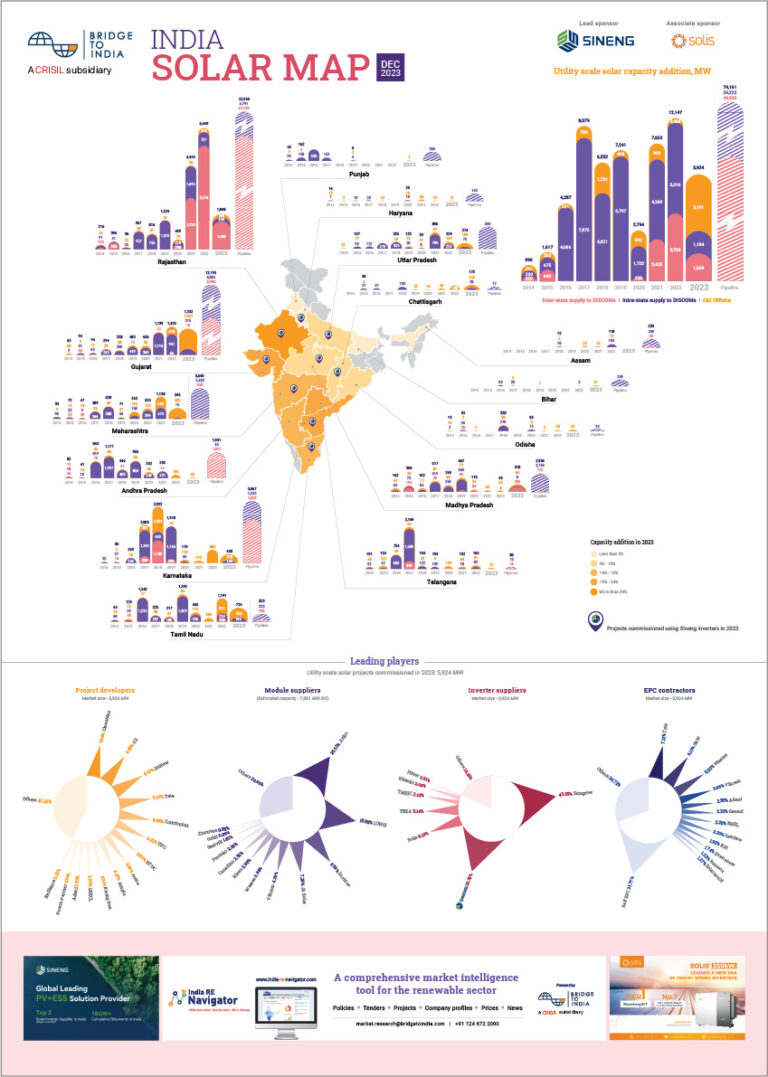Based on a recent report (refer), the government seems to be considering to cut solar tariffs in India by offering power purchase agreements through bids in dollar terms. The idea is that the ministry would help create a (real) hedging fund with a corpus of INR 60 billion (approximately USD 1 billion) primarily by charging developers a hedging fee of INR 0.90/kWh (1.5 US cents/kWh). Such a scheme would help developers access international capital and avoid reduce the currently high hedging costs of around 6%.
- Pooling of hedging costs coupled with government’s support likely to make solar option attractive to discoms
- According to BRIDGE TO INDIA, a realistic expectation for solar tariff would be INR 5.8/kWh, around 9% lower than current tariffs
- We believe that government to focus on increasing the tenor of debt financing from ca. 14 years to 20 years, that alone could reduce solar tariffs by about 7%
The thought behind this is that pooling the hedging costs and putting the government’s weight behind it, will significantly reduce the cost of currency hedging in the market. This would reduce the cost of capital and thereby the cost of solar power, making it more attractive to distribution companies. This is a creative, new idea and shows that the government is thinking out of the box to make its ambitious solar targets real.
The report states that the mechanism could reduce solar tariffs by as much as 40% to bring the down to INR 3.60/kWh (6 US cents/kWh). With the proposed hedging cost of INR 0.90/kWh (1.5 US cents/kWh), effective tariff would be INR 4.50/kWh (7.5 US cents/kWh), very close to the world’s lowest as currently seen in the Gulf region.
BRIDGE TO INDIA’s own calculations show that with an effective interest rate of 5%, the tariff for a 50 MW solar project could be in the range of INR 4.9/kWh (8.3 US cents) to INR 5.5/kWh (9.2 US cents/kWh). This is 14-23% lower than the current tariff/kWh of about INR 6.4 (10.6 US cents/kWh) but considerably higher than the government’s estimate of INR 3.60/kWh (6 US cents/kWh). With the hedging cost of INR 0.90/kWh (1.5 US cents/kWh), a realistic expectation for solar tariff would be INR 5.8/kWh, around 9% lower than current tariffs. To us, therefore, it seems that the numbers indicated by the government are too aggressive.
Another moot point is the level of international lending appetite for Indian solar projects. Our view is that apart from certain multi and bi-lateral financing institutions (for example, IFC, US Exim, KFW), there is actually very little demand for Indian solar projects in the international debt markets. Hence, irrespective of the proposed cost benefits, any approach that targets hedging costs is unlikely to be a silver bullet solution for reducing the costs of Indian solar projects.
We believe that the government should instead be looking at developing indigenous financing solutions, particularly with a view to increasing the tenor of debt financing from ca. 14 years to 20 years. That alone could reduce solar tariffs by about 7%.












